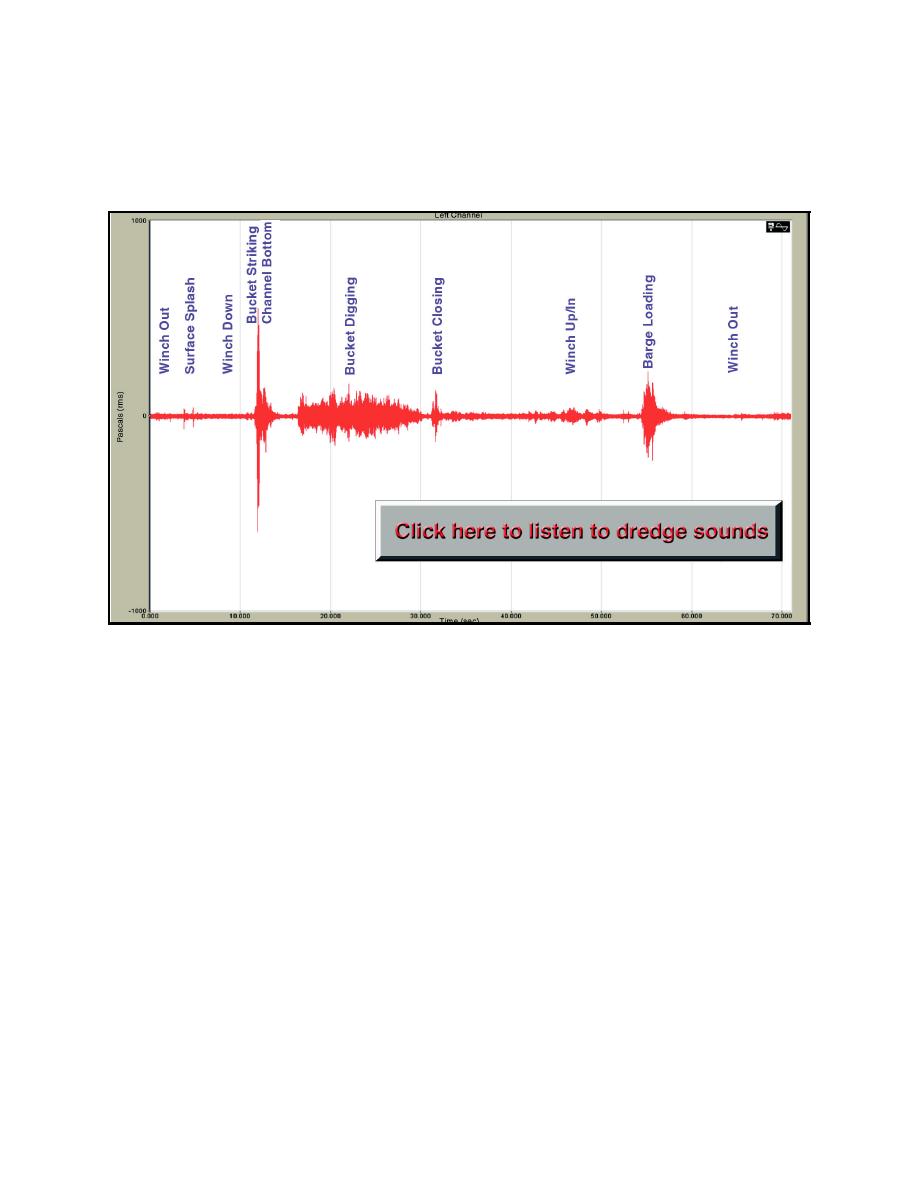 |
||
|
|
||
|
Page Title:
Figure 3. An example pressure waveform for a typical bucket deployment and retrieval cycle |
||
| |||||||||||||||
|
|
 ERDC TN-DOER-E14
August 2001
As described, the six sound events are repeated on approximately a 1-min period with minor (e.g.,
10-15 sec) variations. Occasional interruptions in the cycles occurred to accommodate barge
maneuvering, dumping and washing activities, and equipment maintenance. Figure 3 illustrates a
complete cycle encompassing these events for the dredge Viking.
Figure 3. An example pressure waveform for a typical bucket deployment and retrieval cycle
Based upon the six-event sequence, initial data analyses focused only on these six distinct dredge
cycle sounds as captured in Viking recording sessions 3-9 and 11-15. Session 4 was excluded from
this analysis because a tug and barge not related to the dredging operations transited the listening
position during almost the entire recording session, thus masking dredge-induced sounds. Session 12
was also excluded from further analysis because no noises characterizing the Viking dredging
activity were audible at that range above the distant background noise created by barge washing
operations from the Crystal Gayle dredge operations near the listening positions. Session 13 was
conducted at an approximate distance of 7 km from the dredge. Only faint sounds associated with
bucket impact on the bottom were audible at this range. Because the remaining sound events of the
dredge cycle were indistinguishable at this distance, session 13 was excluded from further analysis.
As previously stated, during the recording sessions, field notes including distance to the dredge or
other sound sources were recorded simultaneously on the right channel of the DAT tape. At close
ranges the distance was obtained with a laser rangefinder and the distance recorded in meters. When
the distance was further than the maximum usable distance for the laser rangefinder (approximately
500 m), the radar unit aboard the Margaret M was used and estimated distances were recorded as
nautical miles. All distances recorded in nautical miles from the radar were converted to meters,
and the estimated distance to the dredge was then interpolated based on recording times, distance
notes, and times at known audible events.
6
|
|
Privacy Statement - Press Release - Copyright Information. - Contact Us - Support Integrated Publishing |